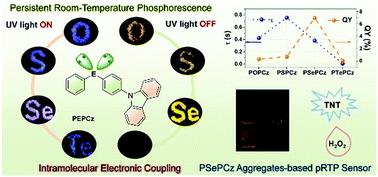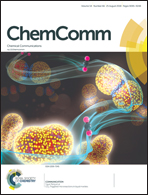Chalcogen atom modulated persistent room-temperature phosphorescence through intramolecular electronic coupling†
Abstract
A series of novel persistent room-temperature phosphorescence (pRTP) materials (PEPCz) obtained via a combination of chalcogen atoms (O, S, Se, and Te) and a carbazolyl moiety is reported. Single crystal structure analysis revealed that PEPCz had similar molecular conformations and almost identical crystal packing. Mechanistic study showed that the intramolecular electronic coupling between the chalcogen atoms and π-units was responsible for tunable pRTP. The PEPCz were used not only to realize graphic encryption, but also to fabricate pRTP sensors for H2O2 and TNT detection.



 Please wait while we load your content...
Please wait while we load your content...